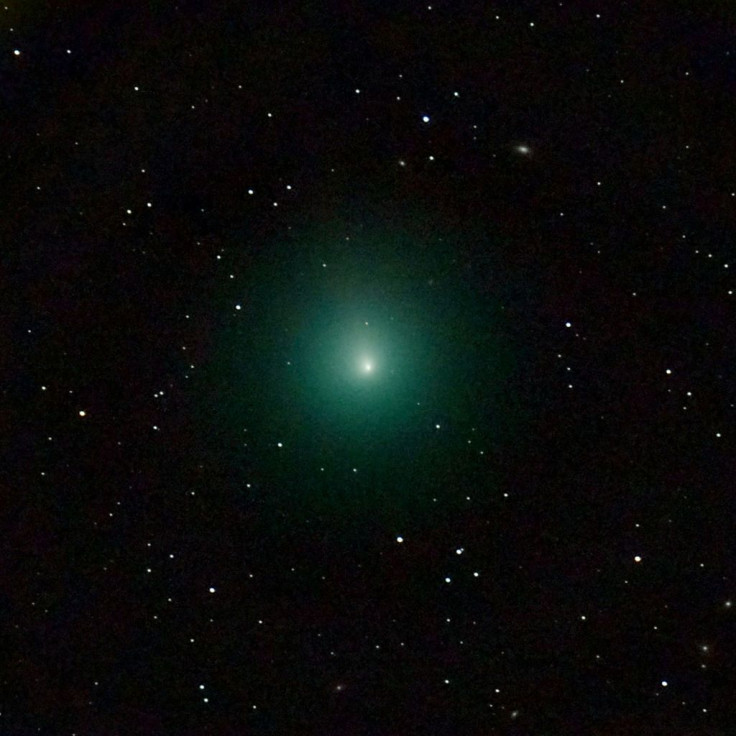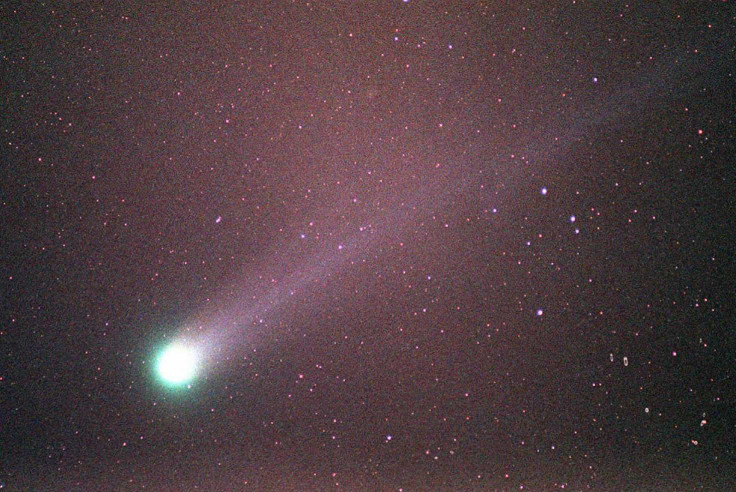Is Comet SWAN Fragmenting? Astronomers Detect Powerful Outburst

KEY POINTS
- Astronomers noticed that comet SWAN's brightness has increased
- A scientist believes the approaching comet is not fragmenting
- SWAN's recent outburst may have been caused by surface eruptions
Astronomers observing the approaching comet SWAN have detected a powerful outburst from its surface. This could be an indication that the comet is starting to break apart.
Comet SWAN, also known as C/2020 F8, was first detected by NASA and the European Space Agency’s robotic spacecraft Solar Heliospheric Observatory (SOHO) on April 11. The comet was detected using the spacecraft’s hydrogen-detecting instrument known as the Solar Wind ANisotropies, or SWAN.
Currently, the comet is making its way toward the Sun and the Earth. According to astronomers, the comet has become bright enough to be spotted with the naked eye. Recently, sightings on the comet revealed that its brightness has significantly increased.
“Comet C/2020 F8 (Swan) brightened ever-so-slightly overnight, from magnitude 5.0 on the morning of May 1st, to magnitude 4.9 on the morning of May 2nd,” astronomer Stephen James O’Meara stated. “At least it's brightening over the skies of Maun, Botswana.”
Like in other known comets, SWAN’s increased brightness could mean that it’s starting to break apart as it approaches the Sun. Explosions of gas and dust from the comet’s surface as it gets heated up by sunlight may have triggered a powerful outburst.
However, according to Karl Battams of the Naval Research Lab in Washington, D.C., SWAN’s outburst may not necessarily mean that it is breaking apart.
“Outbursts do not necessarily imply fragmentation, and ground-based images are not yet showing evidence of a breakup," he said, according to SpaceWeatther.com. "This could just be a particularly feisty and volatile comet.”
The recent outburst of comet SWAN could be related to its previous behavior when it was first discovered. The SWAN instrument on the SOHO spacecraft was designed to detect traces of hydrogen in space.
The reason why it was able to spot the comet was because of its powerful hydrogen outbursts. These outbursts created a huge cosmic cloud around the comet, which contributed to its increased brightness.
According to scientists, the comet’s hydrogen outbursts were caused by water ice erupting from the comet’s surface. The eruptions might have been triggered by the heat of the Sun.

© Copyright IBTimes 2025. All rights reserved.





















